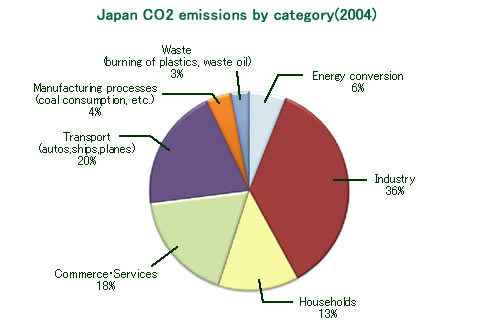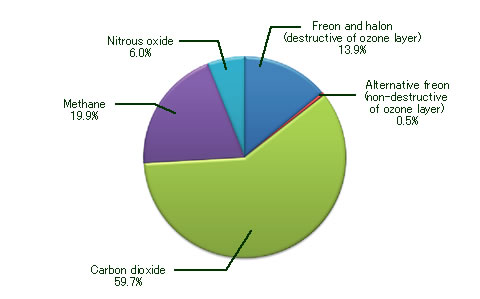Influence ratio of greenhouse gas to global warming
influence ratio of greenhouse gas to global warming
Source: IPCC “Third Assessment Report: Climate Change 2001”


Roughly 90% of Japan’s greenhouse gas emissions in fiscal year 2004 (definitely reported) were due to the industrial, transport, commercial, service, and household sectors combined. Each of those sectors runs on fossil fuel convert into electric power or gasoline. In order to change this state of affairs substantially, it’s necessary to develop new technologies and energy sources.
Development of those new technologies and energy sources is being rushed forward. In the meantime, however, global warming threatens to continue unabated. We have an obligation to do all that is within our power right now.
Of course it’s important to take individual action to reduce carbon dioxide emissions in our daily lives. However, it’s also true that there’s a limit to the potential for reduction as well as misgivings about measures that would lower the standard of living or obstruct productive activities.
In nature, carbon dioxide circulates through a great “carbon cycle” in which it is emitted, absorbed, and fixed in various ways, thus maintaining a constant density in the atmosphere.
The trouble with global warming is this concentration of carbon dioxide, not emissions per se. While it’s natural to reduce emissions for the purpose of stabilizing the atmospheric concentration, measures to increase absorption at the same time are expected to be much in demand in the future.

